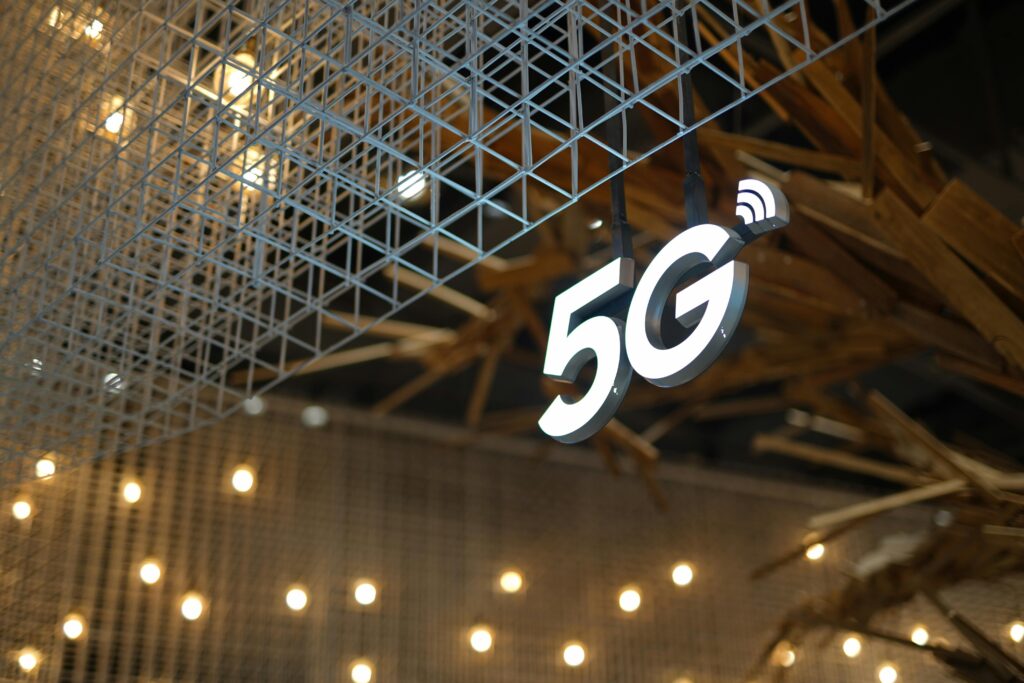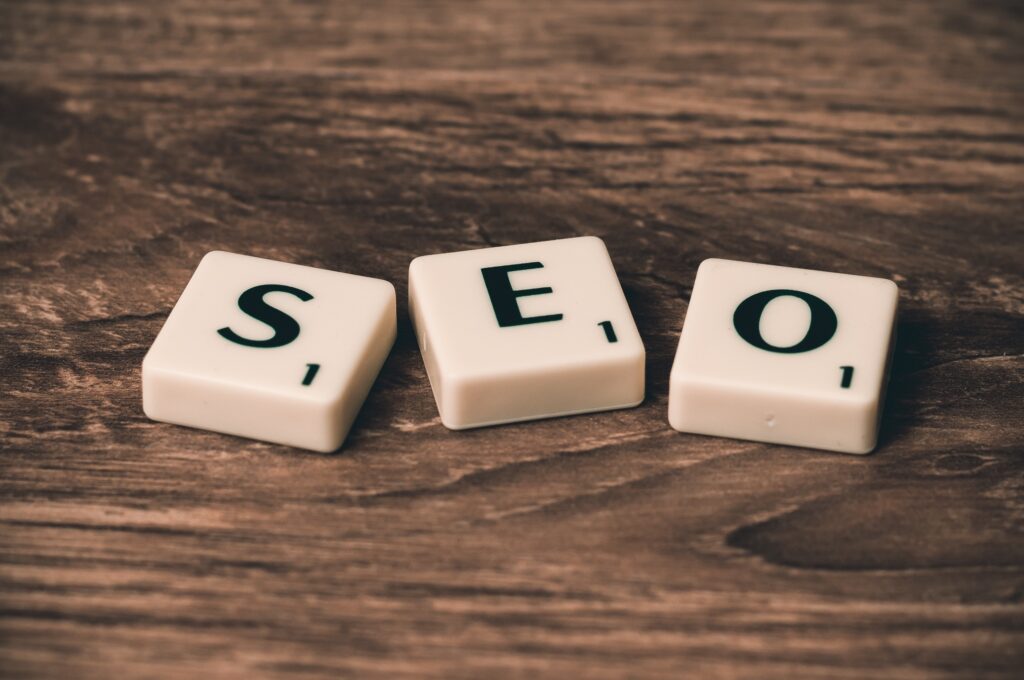Understanding 5G: The Next Generation of Connectivity
In today’s fast-paced world, staying connected is more important than ever. Enter 5G technology, the latest evolution in mobile networks. If you’ve heard buzz about 5G but aren’t quite sure what it is, you’re in the right place. Let’s break down what 5G is, how it differs from previous generations, and the exciting possibilities it brings for the future of connectivity in marketing.
What is 5G Technology?
5G, or fifth-generation technology, is the latest standard for mobile networks. It promises faster speeds, lower latency, and increased capacity compared to its predecessors. While 4G brought us mobile internet and streaming, 5G takes it to a whole new level.
Imagine downloading an entire movie in seconds instead of minutes—that’s the magic of 5G! This technology is designed to support a massive number of devices simultaneously, making it ideal for our increasingly connected world. With 5G, your smartphone, smart home devices, and even cars can communicate seamlessly, transforming how we live and work.
1. Key Differences from Previous Generations
To understand the significance of 5G, let’s look at how it differs from previous generations like 4G and 3G. One of the most notable differences is speed. While 4G networks can reach speeds of up to 100 Mbps, 5G can deliver speeds exceeding 10 Gbps. That’s more than 100 times faster!
But speed isn’t the only difference. 5G technology also boasts significantly lower latency. Latency refers to the time it takes for data to travel from one point to another. With 4G, latency can be around 30-50 milliseconds, while 5G can reduce that to as low as 1 millisecond. This means real-time interactions become possible, enhancing mobile experiences.
Another major change is capacity. 5G networks can support a higher density of devices in a given area. This is crucial as we see more devices connected to the internet, from smartphones to smart appliances. With 5G, you can expect smoother performance even in crowded places, like concerts or sports events.
2. The Impact of 5G on Digital Marketing
Now that you know what 5G is and how it differs from earlier generations, let’s explore how this technology will impact digital marketing. The arrival of 5G opens up exciting 5G marketing opportunities that can redefine how brands engage with their audiences.
Enhanced Mobile Experiences
With enhanced mobile experiences driven by 5G, marketers can create richer, more interactive content. Imagine streaming high-definition videos without buffering or experiencing augmented reality (AR) apps that work seamlessly in real time. These capabilities will allow brands to engage customers like never before.
For example, retailers could use AR to let customers visualize how furniture looks in their homes. With 5G’s fast speeds and low latency, these experiences will be smooth and immersive. This means customers can make informed decisions, leading to higher satisfaction and increased sales.
Furthermore, the ability to deliver personalized content in real-time can significantly improve marketing strategies. With 5G, brands can analyze user behavior and preferences instantly, adapting their messaging on the fly. This level of personalization enhances user experience and fosters brand loyalty.
3. The Future of Connectivity in Marketing
As we look to the future, the possibilities for marketing in a 5G world are exciting. The enhanced connectivity will enable new trends in customer engagement. For instance, live streaming events will become more accessible and enjoyable for audiences.
Brands can host virtual events or product launches that reach a global audience without sacrificing quality. With 5G, viewers can enjoy high-definition streams without lag, making them feel like they’re part of the action. This shift can lead to increased brand visibility and engagement.
Additionally, the rise of Internet of Things (IoT) devices will create new marketing avenues. Smart home devices, wearables, and connected appliances will all generate data that marketers can leverage. Imagine receiving tailored recommendations based on your smart fridge’s inventory or your fitness tracker’s activity levels. This level of connectivity will allow brands to engage customers in innovative ways.
4. Challenges Ahead
While 5G brings many opportunities, it’s essential to acknowledge potential challenges. The rollout of 5G infrastructure requires significant investment, and not all regions will receive equal access. As a result, marketers must consider these disparities when developing strategies.
Moreover, as with any new technology, there may be concerns around data privacy and security. As marketers collect more data from connected devices, ensuring that customer information is protected will be paramount. Building trust with consumers will be crucial in this new landscape.
Conclusion: Embrace the 5G Revolution
In conclusion, 5G technology is poised to revolutionize the way we connect, communicate, and market. With faster speeds, lower latency, and enhanced capacity, it opens up a world of possibilities for businesses and consumers alike.
The impact of 5G on digital marketing will be profound, enabling enhanced mobile experiences and innovative engagement strategies. As marketers, embracing these changes will be vital to staying ahead of the curve.
For more information on the future of 5G and its implications for marketing, check out these resources on [5G technology and its benefits] and [how 5G is changing the digital marketing landscape]. Get ready to embrace the 5G revolution!
Enhanced User Experience: How 5G Will Transform Digital Marketing
As we step into the era of 5G, the impact on digital marketing is set to be monumental. This new technology isn’t just about speed; it’s about creating enhanced user experiences that will change how brands connect with their audiences. Let’s explore how 5G will improve user experiences in digital marketing and what this means for businesses and consumers alike.
1. Blazing-Fast Speeds for Seamless Content Delivery
One of the most exciting aspects of 5G is its ability to deliver content at lightning-fast speeds. Imagine streaming a high-definition video in seconds without any buffering. This is the reality that 5G brings to the table, and it opens up a world of 5G marketing opportunities for brands.
With 5G, marketers can create rich, engaging content that captures attention quickly. Whether it’s a stunning video ad or an interactive infographic, content will load almost instantly. This speed is crucial because research shows that users are more likely to engage with content that loads quickly. If your video ad takes too long to buffer, users may lose interest and click away. With 5G’s fast speeds, brands can keep their audience engaged and eager for more.
Moreover, the ability to deliver content quickly means that marketers can experiment with more complex formats. Think about augmented reality (AR) and virtual reality (VR) experiences. With 5G, these immersive technologies become more accessible, allowing brands to create unforgettable experiences. Imagine trying on clothes virtually before making a purchase or touring a hotel through a 360-degree video. The potential for engaging user experiences is limitless!
2. Real-Time Interactions for Improved Engagement
Another significant benefit of 5G is the reduction in latency, which is the delay before a transfer of data begins. With 5G, latency can drop to as low as 1 millisecond. This quick response time opens the door for real-time interactions in digital marketing.
Consider live streaming events and interactive webinars. With 5G, brands can host high-quality live events that engage users in real time. Viewers can ask questions and receive immediate responses, creating a more interactive and engaging experience. This level of engagement fosters a sense of connection between the brand and the audience.
Moreover, chatbots will become even more effective with 5G. These AI-driven tools can offer immediate assistance, guiding users through their purchasing journey without delays. Imagine visiting a website and having a chatbot instantly provide answers to your questions. This kind of real-time interaction enhances the overall user experience and makes customers feel valued.
3. Enhanced Mobile Experiences Across Devices
As mobile usage continues to rise, the importance of enhanced mobile experiences cannot be overstated. 5G technology significantly improves mobile connectivity, making it easier for brands to reach consumers where they are. With more people accessing the internet via smartphones, optimizing for mobile has never been more critical.
5G enables mobile marketers to deliver high-quality visuals and rich media directly to users’ devices. This means that brands can create stunning mobile ads that grab attention and drive engagement. High-resolution images and videos can be streamed without lag, ensuring that users receive the best possible experience.
Additionally, the integration of IoT devices will further enhance mobile experiences. As more smart devices become connected, brands can gather valuable data about user preferences and behaviors. This information allows for hyper-targeted marketing campaigns that resonate with individual users. Imagine receiving personalized offers based on your previous purchases or preferences, all delivered seamlessly through your mobile device.
4. The Rise of Personalized Marketing
Personalization is key to effective marketing, and 5G will take this to new heights. With enhanced data collection capabilities, brands can understand their customers better than ever. This understanding allows for tailored marketing messages that speak directly to individual needs and preferences.
5G in digital marketing will enable brands to analyze user behavior in real time. By leveraging this data, businesses can deliver personalized content, offers, and recommendations that resonate with their audience. For instance, if you frequently browse for fitness gear, a brand could send you a targeted promotion for a new workout outfit. This level of personalization increases the chances of conversion and fosters brand loyalty.
Moreover, the speed of 5G means that these personalized experiences can happen instantly. You might receive an offer while browsing, and with just a few taps, you can make a purchase. This seamless experience enhances user satisfaction and encourages repeat business.
5. Enhanced Analytics for Better Decision Making
Lastly, the impact of 5G extends to analytics and data collection. With improved connectivity, brands can gather and analyze data more effectively. This means marketers can gain insights into user behavior, preferences, and trends in real time.
Enhanced analytics will allow businesses to make data-driven decisions faster. Marketers can quickly identify what works and what doesn’t, enabling them to optimize their strategies on the fly. This agility is crucial in today’s fast-paced digital landscape, where consumer preferences can shift rapidly.
Additionally, the ability to track user interactions in real time will lead to more effective marketing campaigns. Brands can adjust their messaging and offers based on immediate feedback, ensuring they stay relevant and engaging. This data-driven approach will significantly enhance user experiences, leading to higher satisfaction and loyalty.
Conclusion: Embracing the Future of Connectivity
In conclusion, the arrival of 5G technology promises to revolutionize digital marketing by enhancing user experiences. With blazing-fast speeds, real-time interactions, and improved mobile experiences, brands will be better equipped to engage their audiences.
5G marketing opportunities will allow for more personalized and immersive experiences, fostering deeper connections between brands and consumers. As marketers embrace the future of connectivity, they can create compelling campaigns that resonate with users in meaningful ways.
For further insights on how 5G is reshaping the marketing landscape, check out these articles on [the impact of 5G on digital marketing] and [how 5G technology will change customer experiences]. Get ready for a new era of connectivity!
New Opportunities: Marketing Innovations Brought by 5G
As 5G technology rolls out across the globe, it’s not just about faster internet; it’s about unlocking a treasure trove of new marketing opportunities for brands. With its ability to enhance mobile experiences and support innovative applications, 5G is set to transform the landscape of digital marketing. Let’s dive into the exciting opportunities that 5G will bring to the table!
1. Immersive Experiences with Augmented and Virtual Reality
One of the most thrilling 5G marketing opportunities lies in augmented reality (AR) and virtual reality (VR). With 5G’s high speeds and low latency, brands can create immersive experiences that captivate audiences like never before.
Imagine walking into a store and using your smartphone to see how a piece of furniture would look in your living room. With AR, this is possible and incredibly easy! You simply point your phone at the space, and voilà—instant visualization. This enhanced mobile experience makes shopping more engaging and interactive.
Brands can also host virtual reality events that allow users to explore products in a digital space. For example, a car brand could create a VR experience that lets potential buyers take a virtual test drive. This kind of immersive experience not only grabs attention but also helps customers make informed decisions.
2. Hyper-Personalized Marketing Campaigns
5G in digital marketing opens up the door to hyper-personalized campaigns. With enhanced data collection and analysis capabilities, brands can tailor their messaging to individual preferences in real-time.
Picture this: you’re browsing a fashion website when a chatbot pops up. It remembers your previous purchases and suggests items based on your style. This level of personalization is made possible by the speed and efficiency of 5G networks.
Moreover, brands can analyze user behavior as it happens. If you’re engaging with a certain type of content, brands can quickly adjust their marketing strategies to serve you more of what you love. This dynamic approach enhances user satisfaction and fosters brand loyalty, making customers feel valued and understood.
3. Live Streaming and Real-Time Engagement
Another exciting opportunity presented by 5G is the ability to offer seamless live streaming. With faster download and upload speeds, brands can host live events that engage audiences in real time.
Imagine attending a live concert or fashion show from the comfort of your home, with crystal-clear streaming and no buffering interruptions. This level of engagement allows brands to connect with their audience in a more meaningful way.
Brands can also utilize live streaming for product launches, allowing viewers to interact by asking questions and giving feedback instantly. This real-time engagement builds a sense of community and encourages customer participation, which is invaluable in today’s marketing landscape.
4. Enhanced Mobile Advertising
With 5G’s capabilities, mobile advertising will become more dynamic and effective. Brands will be able to serve high-quality video ads without the risk of lag or buffering. Imagine scrolling through your social media feed and encountering a stunning video ad that captures your attention immediately.
These enhanced mobile experiences will lead to higher engagement rates and, ultimately, conversions. Brands can create visually striking ads that resonate with users, making them more likely to take action.
Additionally, the ability to deliver ads based on real-time location data means brands can target users more precisely. If you’re near a coffee shop, a brand could send you a special offer for a free drink. This level of targeting enhances the relevance of ads and increases the chances of conversion.
5. The Rise of Smart Product Integration
5G technology will pave the way for smart product integrations that can transform the way brands interact with customers. As more devices become connected to the internet, brands can collect and analyze data from these devices to enhance user experiences.
For example, a smart refrigerator could track your food inventory and suggest recipes based on what you have. If you’re missing an ingredient, the brand could send you an offer for a quick delivery. This type of integration not only adds convenience but also keeps customers engaged with the brand.
Moreover, brands can create loyalty programs that reward customers based on their interactions with smart devices. Imagine earning points every time you use a smart product, which can be redeemed for discounts or exclusive offers. This innovative approach fosters loyalty and encourages repeat purchases.
6. Expanded Reach in Global Markets
The impact of 5G extends beyond just enhanced experiences; it also allows brands to reach new audiences in global markets. As 5G networks expand, more people will gain access to high-speed internet. This means brands can tap into emerging markets that previously had limited connectivity.
As a result, businesses can expand their customer base and introduce their products to new demographics. This global reach offers tremendous growth potential, especially for brands looking to diversify their market presence.
Conclusion: Embracing the Future of Connectivity
In conclusion, 5G technology is set to revolutionize digital marketing by creating a myriad of new opportunities for brands. From immersive experiences with AR and VR to hyper-personalized campaigns and seamless live streaming, the possibilities are endless.
As businesses embrace the future of connectivity in marketing, they can create more engaging and interactive experiences that resonate with their audiences. The impact of 5G will be felt across industries, making it an exciting time to be involved in marketing.
For more insights on how 5G is transforming the marketing landscape, check out these articles on the impact of 5G on consumer behavior and how brands can adapt to 5G technology. Get ready to embrace the future!
Challenges to Consider: Navigating the 5G Rollout
While the excitement surrounding 5G technology is palpable, it’s important to acknowledge the potential challenges that businesses may face during its rollout. As we dive into this new era of connectivity, understanding these obstacles will be crucial for maximizing 5G marketing opportunities. Let’s explore the challenges businesses might encounter as they adapt to this transformative technology.
1. High Infrastructure Costs
One of the most significant challenges with the rollout of 5G is the high infrastructure costs involved. Building the necessary towers and equipment to support 5G requires substantial investment. Not every business, especially smaller ones, has the budget to make this leap.
Imagine a small business owner wanting to leverage 5G in digital marketing. They might struggle to keep up with larger competitors who can afford the infrastructure costs. This disparity could create a gap in the market, making it harder for smaller brands to compete effectively.
Moreover, the ongoing maintenance of 5G networks adds another layer of expense. Businesses must budget not only for initial setup but also for future upgrades and repairs. This financial burden could deter some companies from fully embracing the benefits of 5G.
2. Limited Coverage Areas
While 5G promises faster speeds and enhanced mobile experiences, coverage areas can be limited during the initial rollout. Unlike previous generations, which offered broader coverage, 5G requires a denser network of antennas to function optimally.
This means that some areas, especially rural or less populated regions, may experience inconsistent service or even lack connectivity altogether. If you’re a brand trying to reach a diverse audience, this limited coverage can pose challenges. Customers in areas with weak signals may not be able to access the enhanced experiences that 5G promises.
Additionally, businesses might face difficulties in marketing to regions without robust 5G infrastructure. If consumers can’t access high-speed internet, they won’t benefit from the interactive and engaging content that 5G enables. Brands will need to strategize carefully to ensure they’re not leaving anyone behind.
3. Data Privacy and Security Concerns
As businesses embrace the impact of 5G, data privacy and security concerns will become increasingly important. With the rise of connected devices and the ability to gather vast amounts of data, ensuring customer information remains secure is crucial.
Imagine a scenario where a business collects data from smart devices but fails to protect that information properly. A data breach could lead to significant reputational damage and loss of customer trust. As a result, brands must prioritize cybersecurity measures as they move into the 5G era.
Moreover, as more devices connect to the internet, the potential for vulnerabilities increases. Brands will need to invest in robust security protocols to protect user data and maintain customer confidence. This added responsibility could stretch resources, especially for smaller companies.
4. Adapting Marketing Strategies
With the rollout of 5G, businesses will need to adapt their marketing strategies to leverage the new capabilities effectively. The enhanced mobile experiences that 5G offers will require brands to rethink their content and engagement approaches.
For example, marketers will need to focus on creating high-quality video content that can be delivered seamlessly. While this may seem straightforward, producing engaging videos that capture attention takes time, effort, and resources. Not every brand will be prepared to pivot quickly, leading to potential setbacks.
Additionally, the rise of AR and VR experiences will necessitate new skill sets within marketing teams. Brands may need to invest in training or hiring experts who can develop these immersive experiences. This transition could be daunting for companies that are used to more traditional marketing methods.
5. Regulatory Hurdles
Navigating the regulatory landscape surrounding 5G can be another hurdle for businesses. As governments and regulatory bodies formulate rules related to 5G technology, companies must stay informed and compliant.
Regulations regarding data privacy, network security, and even advertising practices may evolve as 5G becomes more widespread. Brands that fail to adapt to these new regulations could face legal repercussions. This uncertainty can create anxiety for businesses trying to plan their 5G strategies.
Moreover, the pace of regulatory changes can be slow, leading to frustration for companies eager to leverage 5G marketing opportunities. Waiting for regulatory approvals or guidance can delay the adoption of innovative marketing strategies.
6. Consumer Education and Adoption
Finally, consumer education and adoption will be crucial factors in the success of 5G technology. While early adopters may be excited about the possibilities, many consumers may not fully understand the benefits of 5G.
If customers don’t see the value in upgrading to 5G, they may be hesitant to embrace it. This reluctance can hinder brands from maximizing the enhanced mobile experiences that 5G offers.
To overcome this challenge, businesses will need to invest in consumer education. This could involve campaigns that explain the benefits of 5G technology and showcase how it enhances their products or services. By helping consumers understand the advantages, brands can foster greater adoption and engagement.
Conclusion: Preparing for the 5G Journey
In conclusion, while the rollout of 5G presents exciting opportunities, it also comes with its share of challenges. From high infrastructure costs and limited coverage areas to data privacy concerns and regulatory hurdles, businesses must navigate these obstacles carefully.
By proactively addressing these challenges, brands can position themselves for success in the 5G landscape. Embracing the future of connectivity in marketing means adapting strategies, prioritizing security, and educating consumers.
For more insights on the complexities of the 5G rollout, check out these articles on [the challenges businesses face with 5G] and [how to prepare for 5G technology]. Get ready to tackle the 5G journey ahead!



